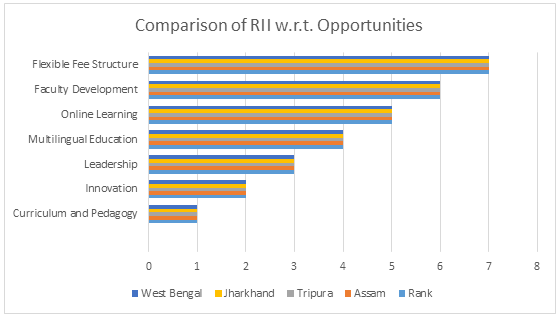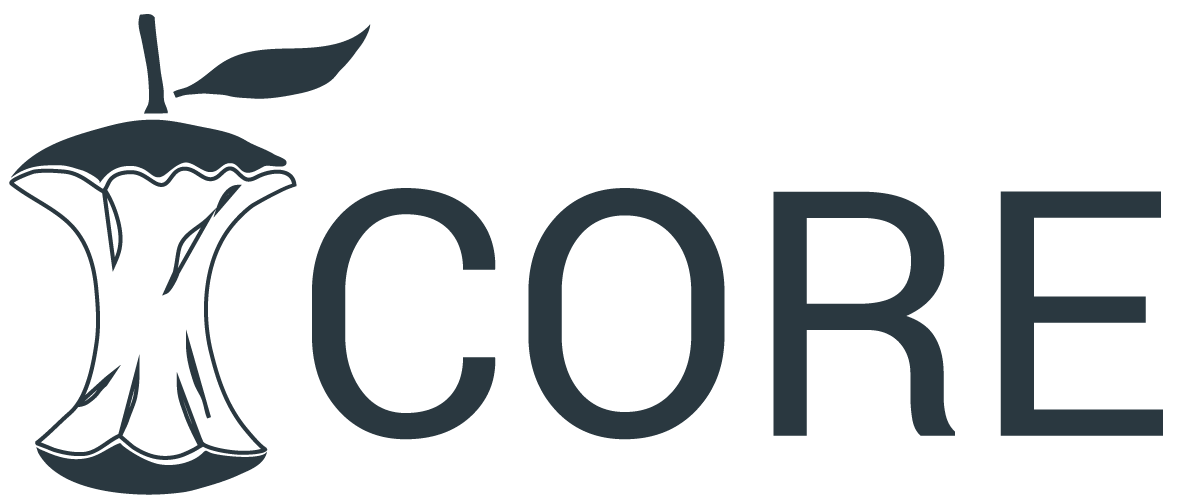Implementing NEP 2020: Issues and Opportunities for Higher Education Administrators
DOI:
https://doi.org/10.5281/zenodo.17596501Keywords:
NEP 2020, HEIs, administrators, preparedness, resource availabilityAbstract
The paper explores the challenges and opportunities facing institutional management and administrators in implementing the NEP 2020. This stakeholder analysis will assess the preparedness of HEIs to adapt to the policy requirements and administrative hurdles (if any) encountered by them. Data has been collected from 121 administrators of colleges of West Bengal, Jharkhand, Assam and Tripura.
Resource availability and action plan have emerged as important factors in determining the preparedness of HEIs. There is a significant difference in perception of administrators across states wrt general awareness, resource availability and action plan. Administrators consider curriculum enrichment and pedagogy as the greatest opportunity promised by NEP 2020 and substantial infrastructure and resource gaps in HEIs as the greatest challenge set by NEP 2020.
Downloads
References
Aithal, S., & Aithal, S. (2020). Analysis of the Indian national education policy 2020 towards achieving its objectives. International Journal of Management, Technology, and Social Sciences, 5(2), 19-41. https://dx.doi.org/10.2139/ssrn.3676074
Chaturvedi, A.P., & Lakra, A.P. (2022). A survey of college students attitude towards national education policy 2020. International Journal for Innovative Research in Multidisciplinary Field, 8(8), 47-50. https://doi.org/10.2015/IJIRMF/202208006
Cohen, J. (1988). Set correlation and contingency tables. Applied Psychological Measurement, 12(4), 425-434.
Gupta, M., Rao, V., & Nawathe, A. (2022). New education policy- Challenges opportunities in higher education. Utkal Historical Research Journal, 35(I), 53-60.
Indhu, T.R. (2022). National education policy 2020: Impact on higher education based on theoretical analysis. Kerala Economy, 3(4), 84-90.
Jain, N. (2023). NEP 2020- A mechanism of skill development through vocational education. International Journal of Creative Research Thoughts, 11(7), 753-762.
Kruskal, W. H., & Wallis, W. A. (1952). Use of ranks in one-criterion variance analysis. Journal of the American statistical Association, 47(260), 583-621.
Kumar, A. (2021). New Education Policy (NEP) 2020: A roadmap for India 2.0. in James, W.B., Cobanoglu, C., & Cavusoglu, M. (Eds.), Advances in Global Education and Research (pp. 1-8). USF M3 Publishing, LLC.
Muralidharan, K., Shanmugan, K., & Klochkov, Y. (2022). The new education policy 2020, digitalization and quality of life in India: Some reflections. Education Sciences, 12(75), 1-21. https://doi.org/10.3390/educsci12020075
Nandi, A. (2023). National education policy 2020- Challenges and opportunities on the educational system. International Journal for Multidisciplinary Research, 5(3), 1-11.
Reddy, M.V.B., Rao, P.B., & Keerthi, G. (2023). Issues and emerging challenges for NEP 2020. International Journal of Scientific Research in Engineering and Management, 7(5), 1- 11. https://doi.org/10.55041/IJSREM20290
Roy, K., & Swargiary, K. (2023). Transforming education: The national education policy of 2020. LAP LAMBERT Academic Publishing.
Shapiro, S. S., & Wilk, M. B. (1965). An analysis of variance test for normality (complete samples). Biometrika, 52(3-4), 591-611.
Umare, M., Shende, A., Ganorkar, S., & Tekade, S. (2022). Impact of national education policy in higher education: An empirical study in the changing academic environment. Humanities and Social Sciences, 82(2), 31-40.
Verma, H., & Kumar, A. (2021). New education policy 2020 of India: A theoretical analysis. International Journal of Business and Management Research, 9(3), 302-306. https://doi.org/10.37391/IJBMR.090308

Published
How to Cite
Issue
Section
License
Copyright (c) 2025 Munmun Dey, Soumya Saha

This work is licensed under a Creative Commons Attribution 4.0 International License.
Research Articles in 'Management Journal for Advanced Research' are Open Access articles published under the Creative Commons CC BY License Creative Commons Attribution 4.0 International License http://creativecommons.org/licenses/by/4.0/. This license allows you to share – copy and redistribute the material in any medium or format. Adapt – remix, transform, and build upon the material for any purpose, even commercially.









